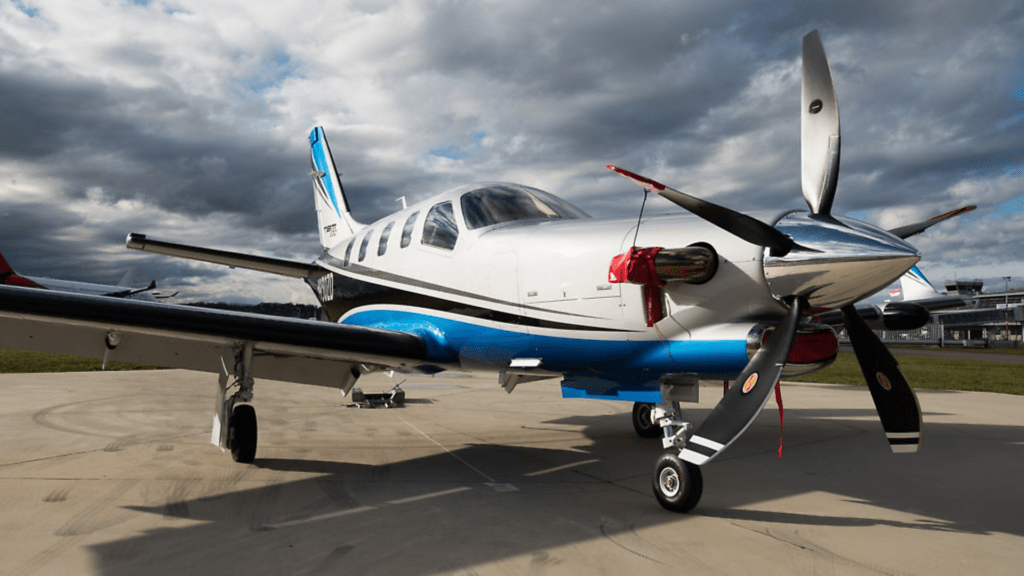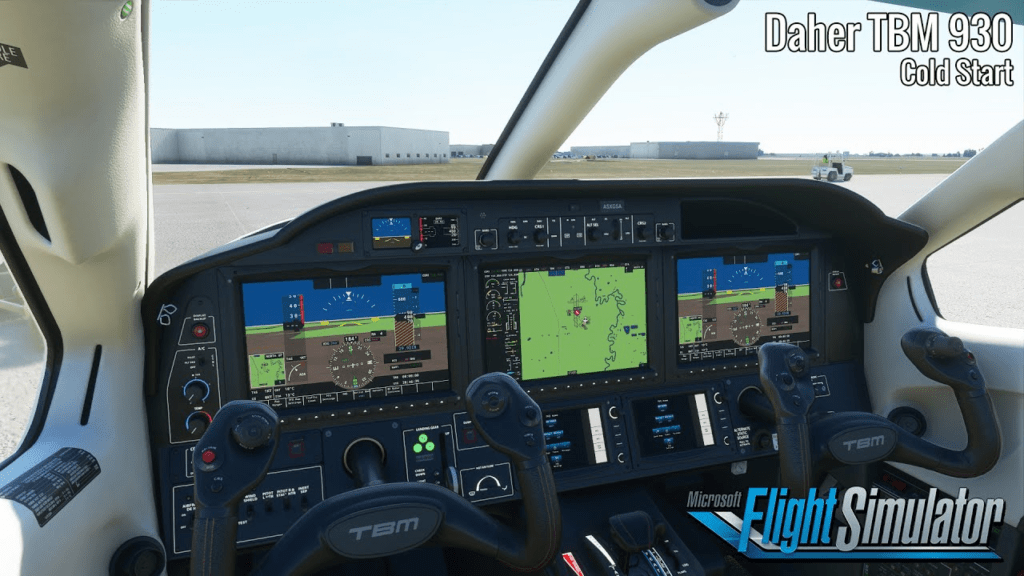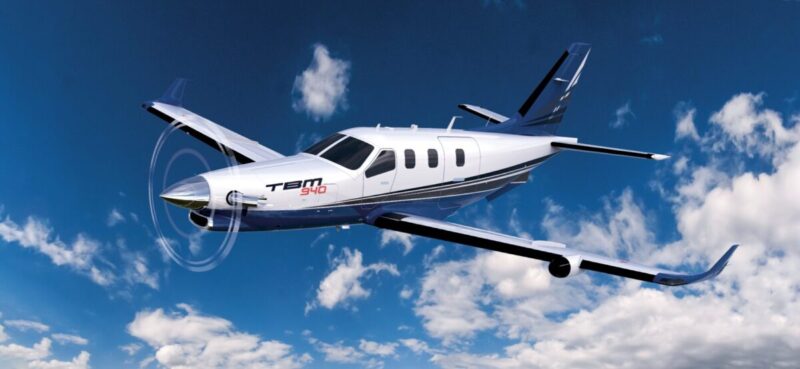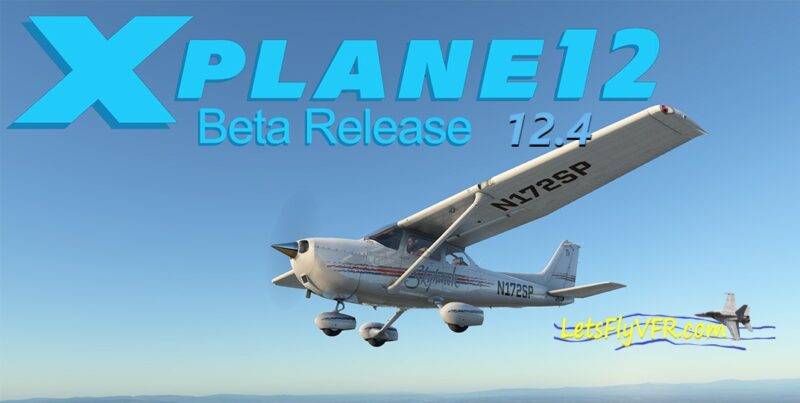Daher TBM 930: The Pinnacle of Single-Engine Turboprop Luxury and Performance.
Introducing the Daher TBM 930.
The Daher TBM 930 represents the epitome of single-engine turboprop aircraft design, blending high performance with state-of-the-art avionics and luxurious comfort. Designed for pilots who want to combine the speed of a light jet with the efficiency of a turboprop, the TBM 930 is a favorite in both real-world aviation and flight simulators like Microsoft Flight Simulator (MSFS) and X-Plane.

This blog dives deep into the TBM 930’s performance specifications, critical speeds, history, safety record, and flying attributes. We’ll also highlight prohibited maneuvers and quirks that make this aircraft unique, offering both real-world pilots and virtual aviators the ultimate guide to mastering this incredible aircraft.
The History of the TBM Series
The TBM series traces its roots back to the late 1980s when SOCATA (a French manufacturer) and Mooney Aircraft (an American company) collaborated to produce a high-performance single-engine turboprop. The result was the TBM 700, which entered service in 1990. Over the years, Daher (formerly SOCATA) refined the design, leading to the TBM 930, which was unveiled in 2016 alongside the TBM 910.
The TBM 930 featured upgraded avionics, incorporating the Garmin G3000 suite for enhanced situational awareness and automation, solidifying its reputation as one of the most advanced turboprop aircraft in the market.

Daher TBM 930 – Performance Specifications
The TBM 930 offers jet-like speeds and remarkable efficiency, making it a compelling choice for owner-pilots and business travelers alike. Below are its performance highlights:
- Engine: Pratt & Whitney Canada PT6A-66D turboprop
- Power: 850 horsepower
- Maximum Cruise Speed: 330 knots (380 mph) at 28,000 feet
- Service Ceiling: 31,000 feet
- Range: 1,730 nautical miles with long-range cruise settings
- Fuel Capacity: 291 gallons (usable)
- Takeoff Distance: ~2,380 feet (at maximum weight)
- Landing Distance: ~2,430 feet
- Rate of Climb: 2,006 feet per minute
The TBM 930’s ability to climb directly to high altitudes and cruise at speeds rivaling light jets make it an exceptional choice for both short hops and long-distance travel.

Daher TBM 930 – Critical Speeds (V-Speeds)
Understanding the TBM 930’s critical speeds is essential for safe and efficient operation. Here are the key V-speeds:
- V_NE (Never Exceed Speed): 266 knots
- V_NO (Maximum Structural Cruising Speed): 175 knots
- V_FE (Maximum Flap Extended Speed):
- Approach: 178 knots
- Landing: 122 knots
- V_Y (Best Rate of Climb): 124 knots
- V_X (Best Angle of Climb): 102 knots
- V_REF (Landing Approach Speed): ~85 knots (depends on weight)
- Stall Speed (Landing Configuration): 61 knots

Pilots appreciate the TBM 930’s broad performance envelope, which allows for safe operation in a variety of conditions, from short runways to high-altitude airports.
- Joystick / HOTAS – AMAZON.com
- Rudder Pedals – AMAZON.com
- Throttle Quadrant – AMAZON.com
- Gaming Chair – AMAZON.com
- VR Headset – AMAZON.com
Daher TBM 930 – Avionics and Features
The TBM 930 is equipped with one of the most advanced avionics packages in its class: the Garmin G3000. This suite enhances safety and efficiency with features that rival those found in modern business jets.
Key Features:
- Synthetic Vision Technology (SVT): Provides a 3D terrain display for enhanced situational awareness.
- Autothrottle: Reduces pilot workload by automatically managing power settings.
- Electronic Stability and Protection (ESP): Prevents excessive pitch and roll.
- Weather Radar and Traffic Alert Systems: Ensure safe operation in busy airspace or challenging weather conditions.
- Garmin Autoland: Although not installed in the 930, the series paves the way for future models to adopt advanced autonomous systems.

Daher TBM 930 – Luxurious Cabin Design
The TBM 930’s cabin is designed with business-class luxury in mind. Passengers enjoy:
- Seating Capacity: 4–6 passengers.
- Ergonomic Leather Seats: Adjustable with fold-out tables.
- Noise Insulation: Makes the cabin remarkably quiet, even at cruise speeds.
- Pressurization: Maintains a comfortable cabin altitude of 6,600 feet at 31,000 feet.
- Baggage Capacity: 330 pounds, spread between the main cabin and rear compartments.
For owner-pilots and passengers alike, the TBM 930 provides an unparalleled level of comfort and utility.
Daher TBM 930 – Flying Attributes

The TBM 930’s PT6A-66D engine and advanced design deliver a smooth flying experience with responsive handling and excellent stability.
- High-Speed Cruise: The TBM 930 can cruise at 330 knots, making it one of the fastest single-engine turboprops in the world.
- Forgiving Controls: While the aircraft is fast, it’s also predictable, making it accessible for less experienced pilots transitioning to turboprop aircraft.
- Short-Field Capability: With its robust landing gear and effective brakes, the TBM 930 performs well on shorter runways, even when fully loaded.
- Stable in Turbulence: The TBM’s robust airframe ensures stability in turbulent conditions, providing a smoother ride for passengers.
Known Dangers and Prohibited Maneuvers
Despite its advanced systems, the TBM 930 has some limitations and risks that pilots must respect:

- High Approach Speeds: With landing approach speeds around 85–90 knots, managing descent and speed on short runways can be challenging for inexperienced pilots.
- Single-Engine Risks: While reliable, the PT6A engine’s single-engine design lacks redundancy. Pilots should be prepared for engine-out procedures, especially during takeoff and climb.
- No Aerobatics: The TBM 930 is not certified for aerobatic maneuvers. Exceeding critical load factors can result in structural damage or catastrophic failure.
- Steep Descents: Avoid rapid descents at high speeds, as the aircraft can exceed V_NE, leading to structural damage.
Proper training and adherence to the operating manual are essential for safe and effective operation.
The Daher TBM 930 in Flight Simulators

In Microsoft Flight Simulator (MSFS) and X-Plane, the TBM 930 is a popular choice for pilots seeking a balance between high performance and accessibility. Both simulators replicate its avionics, systems, and flight characteristics with remarkable fidelity.
Simulator Features:
- Garmin G3000 Avionics Suite: Fully functional, including SVT and advanced autopilot modes.
- Detailed Cockpit and Cabin: Highly realistic textures and interactive systems.
- Custom Sounds: Accurate PT6 engine sounds add immersion.
- Dynamic Weather Adaptation: Simulates how the TBM 930 handles turbulence, icing, and other environmental factors.
Safety Record
The TBM series, including the TBM 930, has an excellent safety record. However, as with any high-performance aircraft, certain risks exist:
- Pilot Error: The TBM’s high speeds and advanced systems require proper training. Overreliance on automation or poor energy management can lead to accidents.
- Engine Failure Risks: While the PT6A engine is highly reliable, the single-engine configuration requires vigilance during critical phases of flight.
- Runway Overruns: Approach and landing speeds require careful planning, especially on short or wet runways.
Modern safety systems like ESP and weather radar mitigate many risks, making the TBM 930 one of the safest turboprops available.

Pilot Operating Handbook (POH)
For those seeking more technical details, the Daher TBM 930 Pilot Operating Handbook provides comprehensive operating procedures and performance data. You can access a version of the POH Here. This is a DIRECT DOWNLOAD from LetsFLyVFR
- Latest CPU’s Available Now – Amazon.com
- Get a NEW GPU Best Performance – AMAZON.com
- Upgrade RAM Here today – AMAZON.com
- Prebuilt PC Options – AMAZON.com
Conclusion
The Daher TBM 930 is an extraordinary aircraft that bridges the gap between turboprop efficiency and jet-like performance. Whether you’re a real-world pilot or a virtual aviator, the TBM 930 offers an unmatched combination of speed, comfort, and advanced technology.
In Microsoft Flight Simulator or X-Plane, mastering the TBM 930 provides a rewarding experience, allowing you to explore its capabilities in a variety of scenarios. With proper training and respect for its limitations, the TBM 930 promises an exhilarating yet safe flying experience.

Dive into the TBM 930 today, and discover why it remains a favorite among pilots worldwide!
Author
Brendon McAliece (Aka Gunnie) is a military veteran with 23 years working on Jet Fighters, their weapons systems and ejection seat/module systems as well as munitions and R&D. Involved with flight simulation since the 1980s, he has flown all the major flight simulators over the years.
He is an Australian expat who has lived in Malaysia, UK, Saudi Arabia and more recently Thailand. He is a multi-lingual blogger who loves to share his life experiences here on LetsFlyVFR.com and DreamingGuitar.com, with his lifestyle and Travel experiences Blog plus his Dreaming Coffee website.
Learn More @ DreamingGuitar.com – DreamingCoffee.com – LetsFlyVFR.com
( HOME – BLOG – SHOP – ABOUT )
As an Amazon affiliate I may benefit from qualifying sales.SearchSearch









